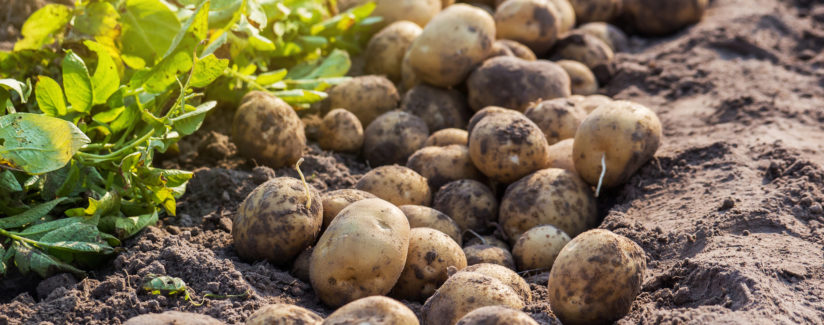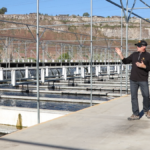
New Potatoes Solve Historic Problem
The disease that caused the devastating Irish Potato Famine may be history due to advances in plant breeding.
Three new varieties of potatoes that are resistant to late blight have been approved by the U.S. Food and Drug Administration. The potatoes were developed using a disease resistance gene from an Argentine variety of potato that has a natural defense to the disease. Expert Dr. David Douches, director of the Potato Breeding and Genetics Program at Michigan State University, gave us some insight into what this means.
“Late blight is caused by Phytophthora infestans. which is a fungus-like organism, and it is the most costly potato disease in the world. It will infect the foliage and tubers, killing the plants and rotting the tubers,” he said.
Late blight was responsible for the Irish Potato Famine in the 1840s. Potatoes were a significant part of the diet of Irish working classes and the disease decimated farmers’ crops. At least 1 million people died as a result and at least 1 million immigrated to North America, as well as Australia and Europe.
The Irish brought their love of potatoes with them and the starchy vegetables continue to be very popular. The average American eats 114 pounds every year. Potatoes are considered the fourth food staple crop in the world behind corn, rice and wheat. Late blight continues to be a problem, especially in wetter areas, and growers use fungicides to prevent the disease. The new potatoes mean better yields and less use of fungicide on potato fields.
“The farmers benefit with reduced disease risk and potential for a higher quality crop when grown under disease-risk conditions. The farm environment can benefit because of the need for less fungicide applications during the season,” Dr. Douches explained.
Since the varieties, which were developed by J.R. Simplot Co., were determined to be safe by USDA/APHIS, the FDA and EPA, farmers are expected to plant them this year and shoppers will be able to purchase them. “These potatoes could end up in the fresh market and or the chip-processing market. Consumers should like the improved quality that can come from these potatoes,” Dr. Douches said.
The potatoes are known by the trade name Innate and have another genetic trait. They do not turn brown when exposed to air. Dr. Douches said this is achieved through, “silencing of the polyphenol oxidase gene that reduces the browning of cut or peeled tubers.” This process is similar to the science used to create Arctic Apples.
We asked if these new varieties are considered GMOs – genetically modified organisms. “The potatoes are genetically modified but I refer to them as Biotech 2.0. They contain genes that come from the potato or related species. So the genes are not foreign,” Dr. Douches said.
He described how that process works to protect against late blight. “The potato can defend itself from P. infestans (blight) if the right R-gene or combination of R-genes are expressed in the foliage,” he said. “There is a battle between the plants and P. infestans: for the plants to have R-genes that recognize the pathogen and the pathogen evolving to evade the R-gene recognition.”
Using the latest precision science to solve a very old problem highlights the potential of genetic engineering to help grow better food.
“These are great potatoes to grow and consume and also process into chips and fries. These potatoes should help dispel the negative myths associated with GM foods,” Dr. Douches said.


























